Walk through the small German town on the Moselle
• Walk through the small German town on the Moselle River

Trier (also sometimes referred to Trier) - a small German town on the Mosel River, near the Luxembourg border, with a very rich history. Founded by the Romans as the Augusta Treverorum 17 BC, he claims the title of the oldest cities in Germany. There are several cities that have emerged around the same time, but Trier substantiates their claims, including the fact that he was the first of all of them received the status of city (the others were the settlements or military camps). Today, here a little more than 100 thousand inhabitants, and the whole set of ancient Roman monuments that you can visit and explore.
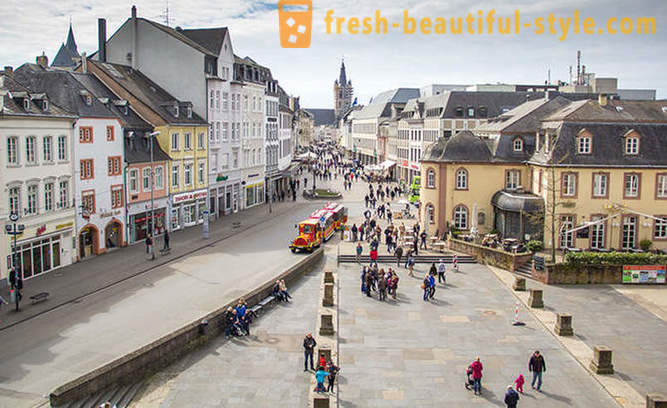
While the rest of the German cities of the Roman Empire honestly acknowledge their former colonies and trace their history from the Romans, or, in extreme cases, from the Celts, Trier went much deeper, in the sense that further into the mists of time. There is a wonderful legend, according to which the city was founded "for 1,300 years before Rome", ie. E. Approximately around 2050 BC some Trebetoy (Trebeta), the grandson of Assyrian deities. As the hero of the Ancient found himself in the vast future of Germany more than four thousand years ago?
There will have to refer to ancient history and mythology. Ancient peoples of Mesopotamia called the presiding deity of their pantheon Baal (modern analogy - Lord, Lord, Herr). Son of Baal was considered the king of Nin, the mythical founder of Nineveh, the capital of the Assyrian Empire, which conquered all of western Asia. By the way, the Assyrian Empire is considered the first (known) empire in human history, the Assyrian state existed for over two thousand years, and today it is the territory of Iraq and Iran. One of the sons of Nina just been Trebeta. Continue heroic work of his father prevented him stepmother - Semiramis. Yes, yes, the same Semiramis, which are attributed to the Hanging Gardens, although, in fact, of course, a myth. On the question of who this general was Semiramis, and what relationship she had to Nina, even the ancient historians diverge. In any case, it is believed that some time Semiramis and Ning were in marital union, and that's just at the time she allegedly strongly disliked Trebetu and drove him out of Assyria. He and his companions made it to Europe and founded on the Mosel Trier. Generally, of course, in all of this a lot of exaggeration, but it is a legend. For example, I wonder what is so much scared Semiramis Trebetu that he fled from it more than 3500 (!) Kilometers (this is assuming directly by land from Nineveh to Trier), and why it is suffered in the cold by the standards of the Assyrian Europe. The oldest known to us recording this story refers to 1105, the time of the Crusades. The impression is that trierskie monks, describing the history of the city, decided to embellish it a little, and under the influence of fashion on the "mysterious East" "found" its founder in the myths of ancient Assyria. Roughly the same thing happened to the history of Paris. There is a legend according to which the Paris founded the Trojans led by those most Paris, fleeing from Troy at the time of its destruction by the Greeks. On the other hand, the archaeological excavations confirm the existence on the territory of Trier human settlement since the Stone Age, ie. E. In 2050 BC, the people there are definitely lived though archaeologists and say that it was just a settlement, and not the city.
In any case, when the Romans appeared on the Moselle, there lived the Celts, specifically the tribe Treveri - hence the Roman name Augusta Treverorum. It seems to be founded the city itself the first Roman Emperor Augustus, who was then "was on a business trip" of Gaul.
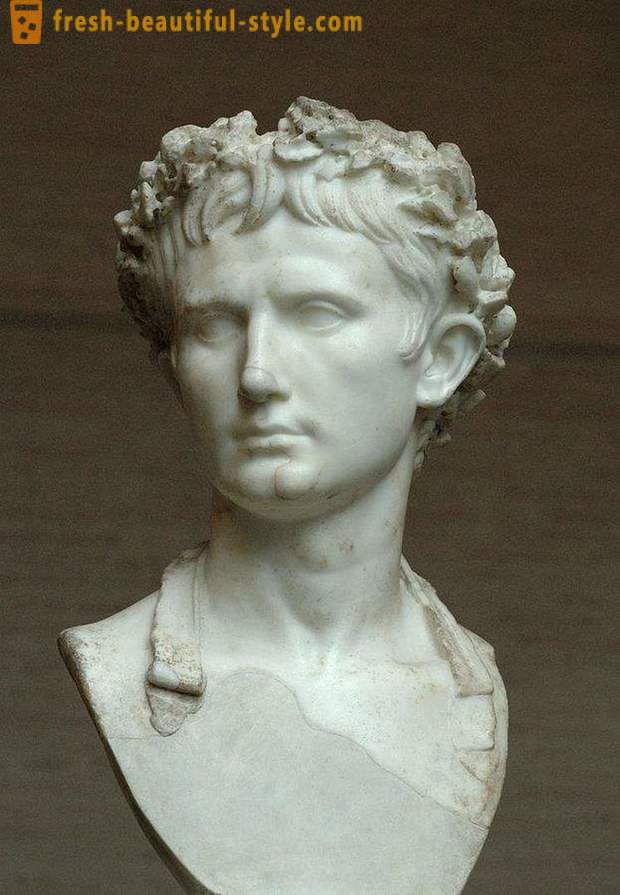
The Romans came to this case, as the foundation of the city, always very serious. Trier was an important point of the Roman transport route from Gaul the Rhine to the North Sea, so the first bridge built across the Moselle. During the first two centuries of its existence, the city acquired a defensive wall in 6, 4 km, thermal baths, amphitheater, basilica, and, of course, all the usual infrastructure.
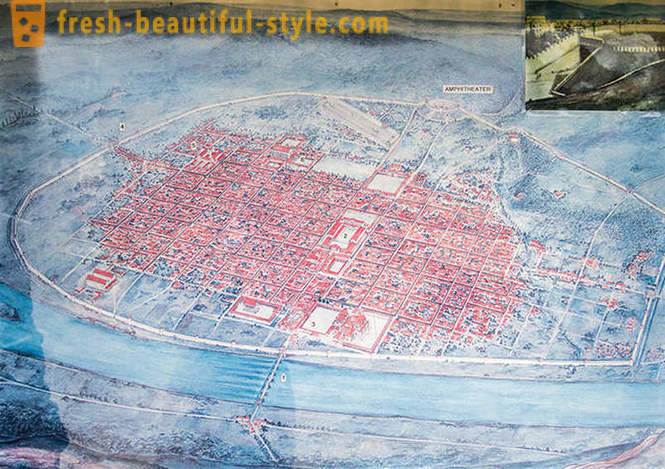
Here are Porta Nigra, the northern city gate, built about 180 years old and have survived to the present day. Today it is a symbol of the city, present on all souvenirs.
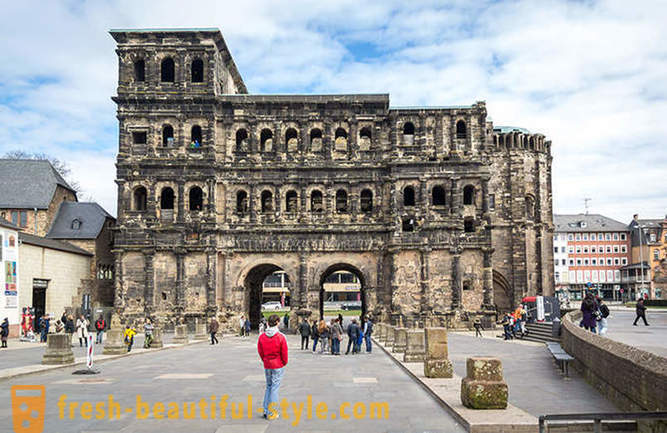
In Roman times, the gates were defensive objectives, how to use them after the departure of the Romans, is not entirely clear, but it's good though, is not dismantled for building materials for homes, as was the case with buildings in most of the former Roman colony. In 1028 to the Porta Nigra wandered Byzantine monk Simeon, and stayed to live there. That is, apparently, at that time there was no such thing. Simeon asked sealed themselves inside the gate, where he stayed until his death in 1035. He was buried there in the gate, and canonized. In this regard, the Porta Nigra organized church making some outbuildings. Only in 1804, Napoleon, on his winning ways in Europe seized Germany, ordered the church to remove and return the gate to its original state.
Today the Porta Nigra gate open to tourists, here are some pictures from the inside

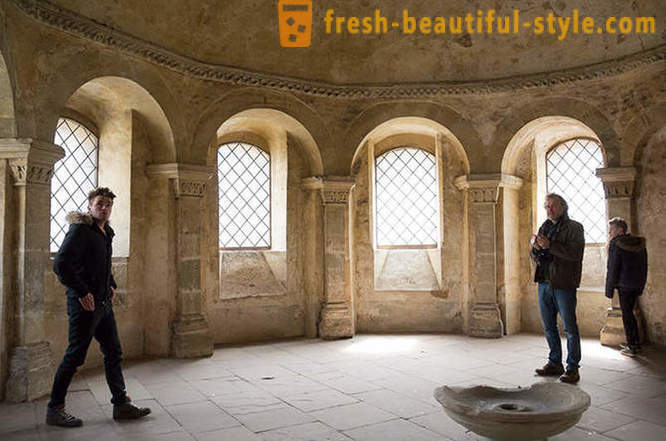
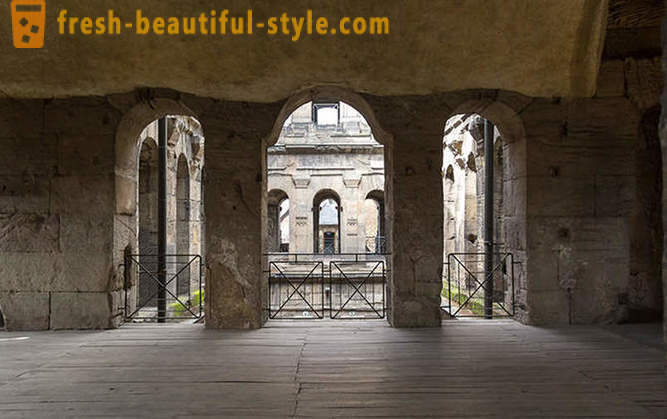

Now terms, that is, the Roman baths, of which there are not many. More precisely, the baths were in triplicate. First, in terms I century built area 8364 sq. meters, today they are called Viehmarktthermen, t. To. The later in their place located cattle market. Now here the usual city square, under which, in fact, the excavations were carried out. Excavated ruins look like.
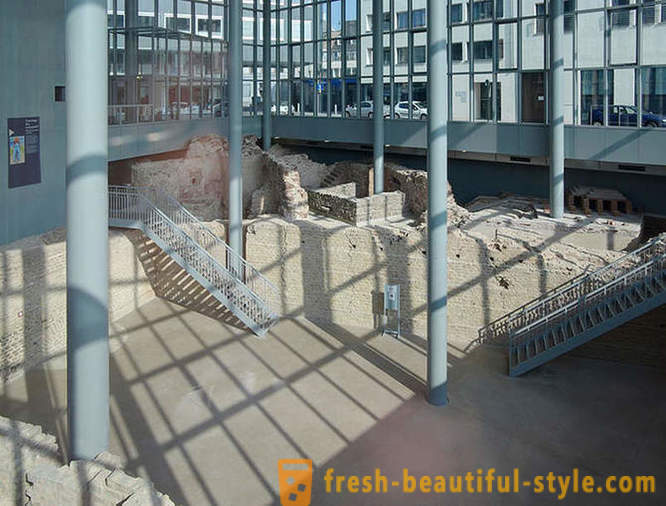
Much more left of Kaiserthermen, r. F. Imperial baths 250 x 145 meters (36 to 250 sq. Meters), which were built in the second half II century.
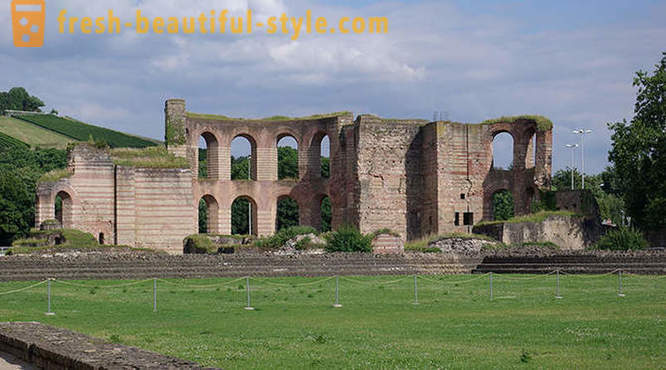
At about the same time, built and Barbarathermen, so called after the name of Saint Barbara, the dimensions of 240 x 175 meters (41 280 sq. Meters). It was the second-largest in terms of the Roman Empire (more only in Rome) and the largest north of the Alps.
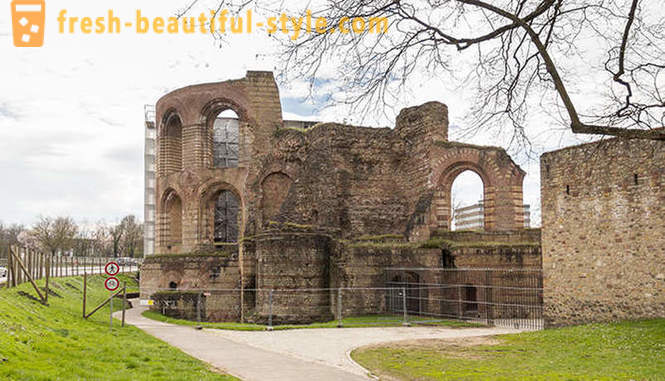
From Roman times remained as Basilica of Constantine. Today it is used not as a church, but rather as an exhibition hall.
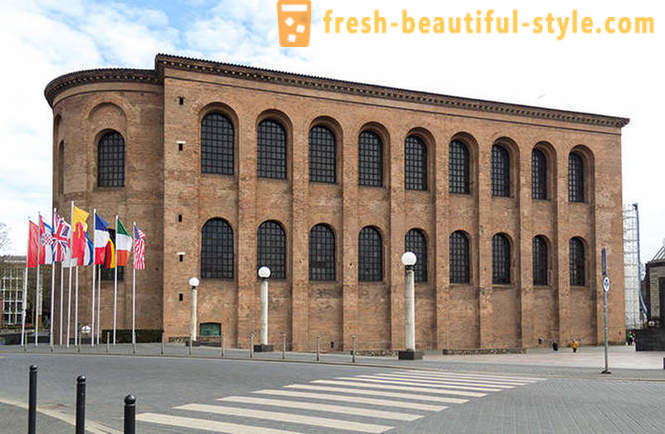
One of the attractions Trier is a Roman amphitheater, which, however, is preserved not as good as amphitheaters in some French cities like Arles and Nimes. Built around 100 years old, it was designed for 18 000 spectators.


In 317-407 years in Trier located Gallic prefecture, t. E. Here the Romans ruled the whole of Gaul. Due to the frequent raids of various barbarian tribes Prefecture, eventually moved to Arles and Trier was finally conquered by barbarians, in this case, the Frankish tribes, and after the collapse of the Roman Empire went into the Frankish kingdom. Who has not attacked Trier! City and saw the Vandals and Alans, and Huns under Attila. And in the IX century there twice got the Vikings and destroyed it. Much later, during the Thirty Years War, the city seized the Spaniards, then the French. The French general seized Trier often - in the course of numerous wars with the Germans.
In the Middle Ages and modern times Trier had a special status - it was the residence of the Elector, Archbishop trierskogo. Electors who at first was only seven, and later became nine, were the very people who elected emperor of the Holy Roman Empire of the German Nation (yes, they have chosen the Emperor!). So you can imagine how high was their status.
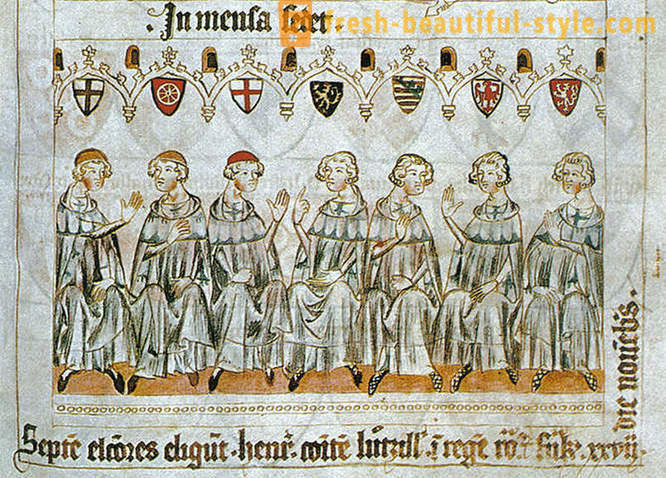
Napoleon, when Germany won, of course, to stop this practice Emperor election. And when Napoleon finally defeated, Trier in 1815 took himself Prussia, which in 1871 became the founder of the new German Empire. From the Middle Ages in Trier left many monuments, the most important of them - this cathedral.
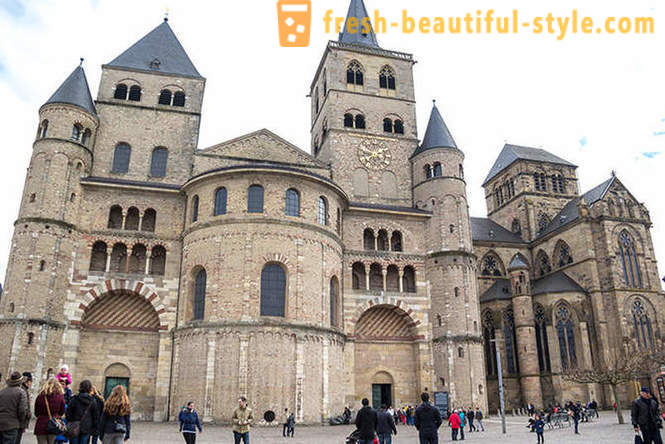
In fact, it would be better to carry this cathedral to antiquity, since it was founded as a basilica in IV century (about 320 years) under the Emperor Constantine, the one who later declared Christianity the state religion of Rome. Thus, triersky Cathedral is the oldest cathedral in Germany. In 882, it was destroyed during the raid of the Vikings, and again rebuilt in the Romanesque style, only to 1196. Next, a few pictures of the cathedral.
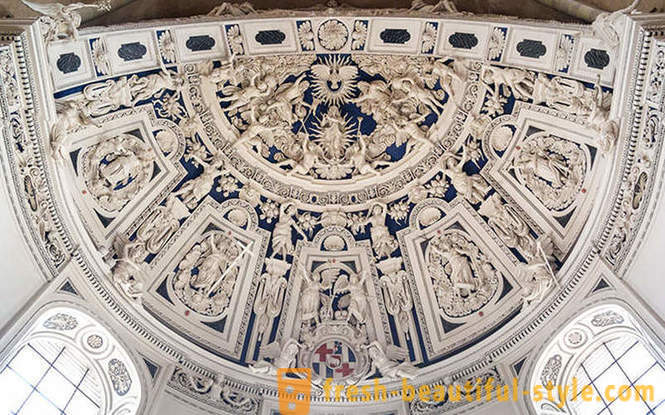

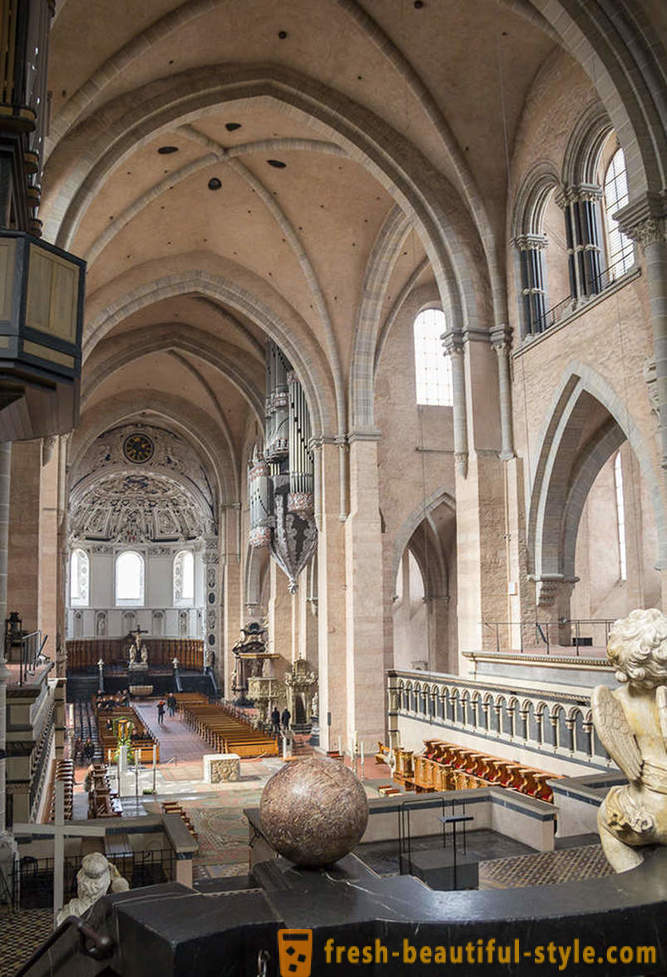

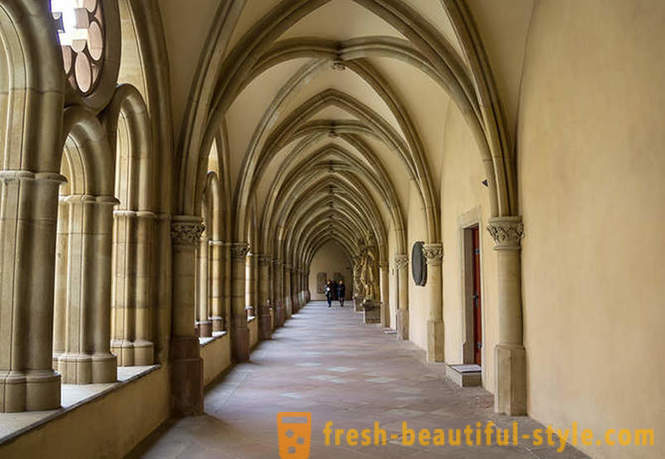

Another attraction - the church liebfrauenkirche XIII century.

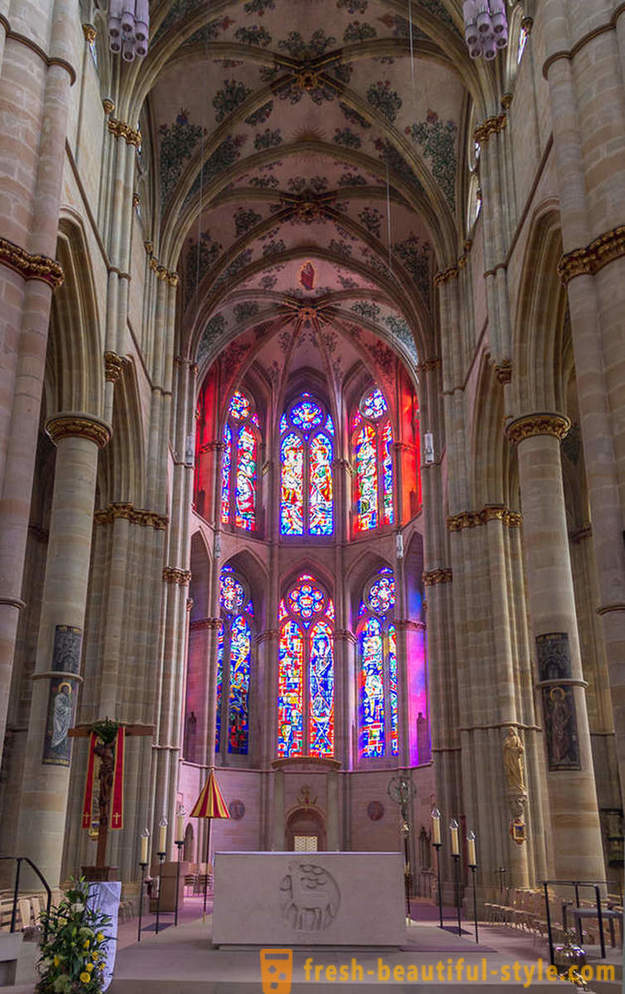
There are the Benedictine Abbey of St. Matthias, again based at the Romans, but the church itself was built in the Middle Ages. Mother of Emperor Constantine Elena ordered to transfer to the remains of the Apostle Matthias Trier, so the city is the only apostolic tomb north of the Alps.
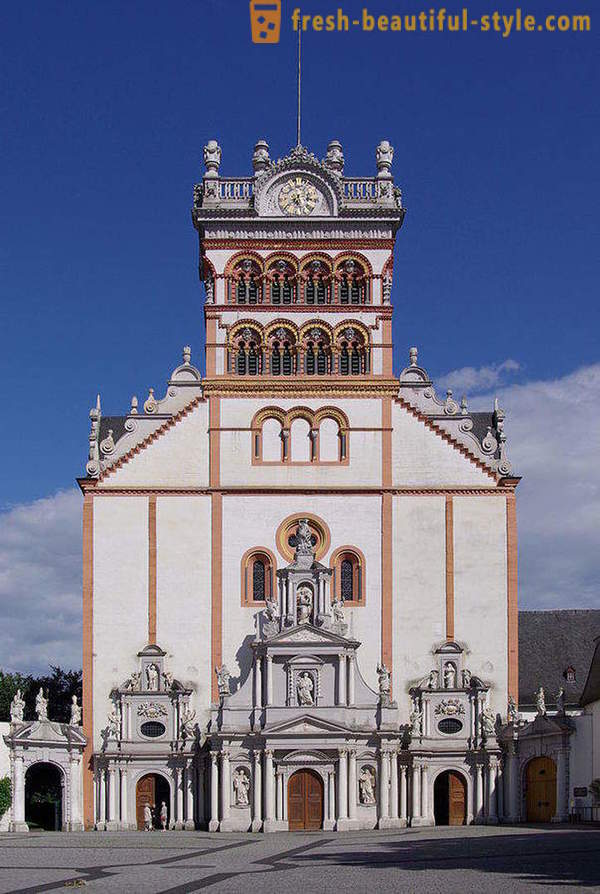
From medieval buildings can still be called the tower Frankenturm.
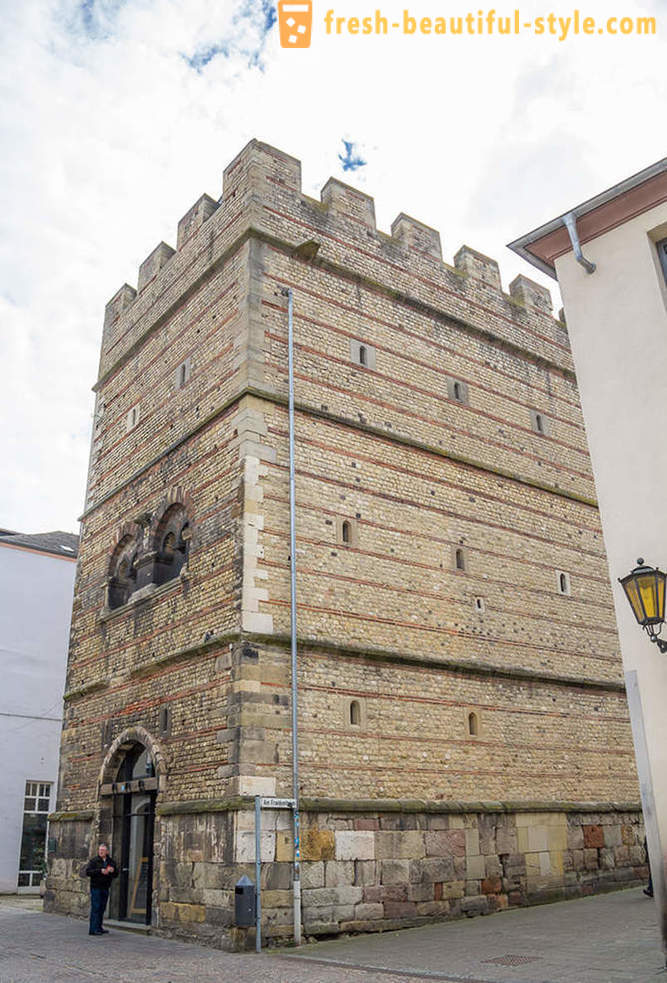
refers to the Medieval and the city's main square.

In general, the old town of Trier admired. Such a variety of beautiful facades in few places meet in Europe.
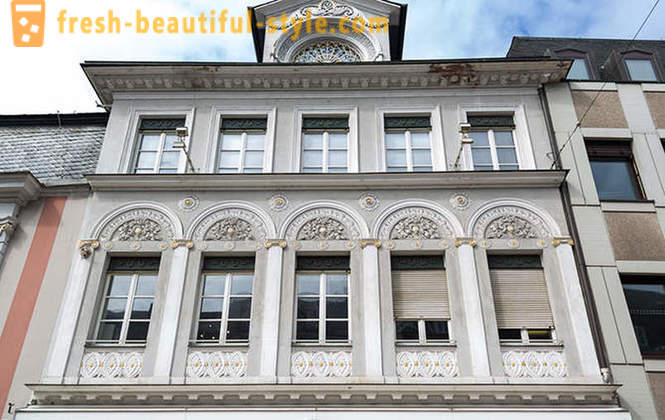
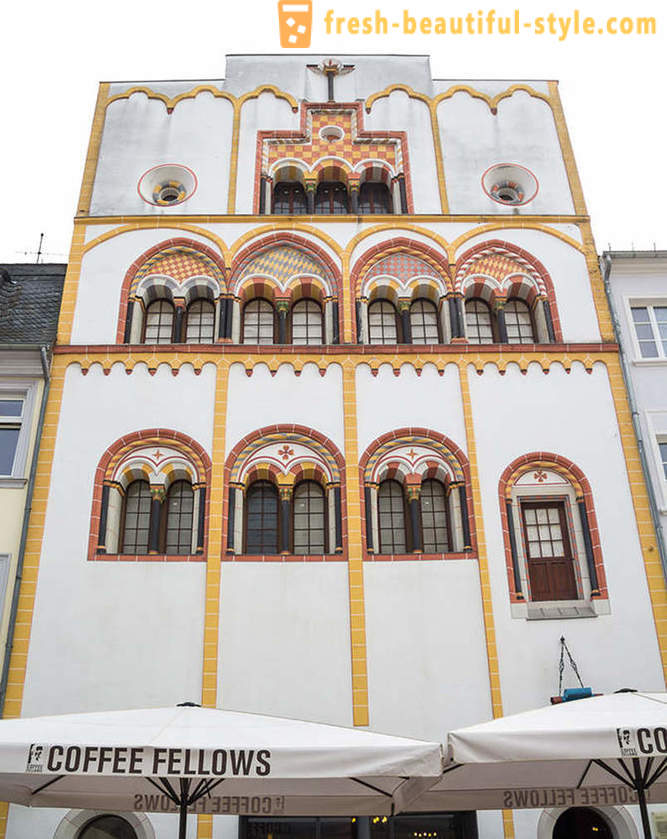
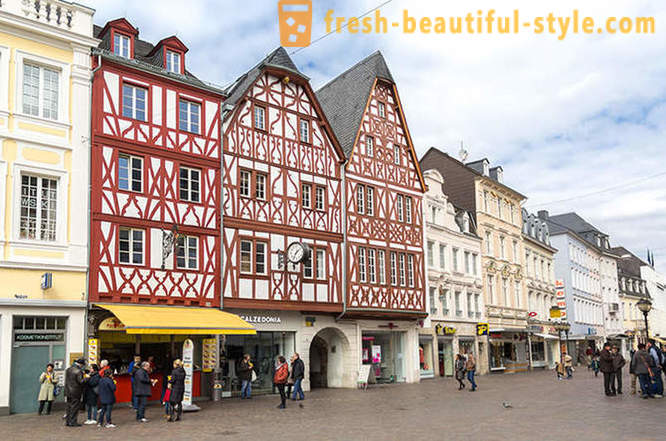
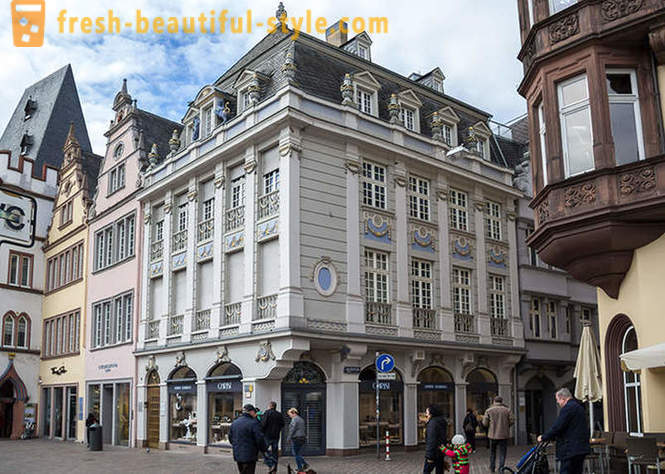
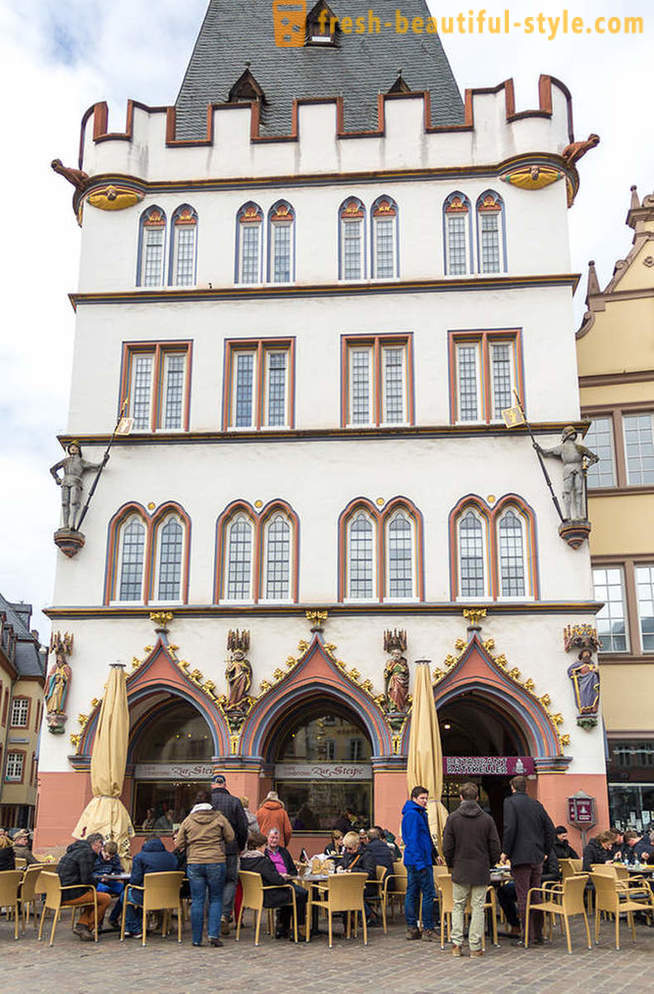
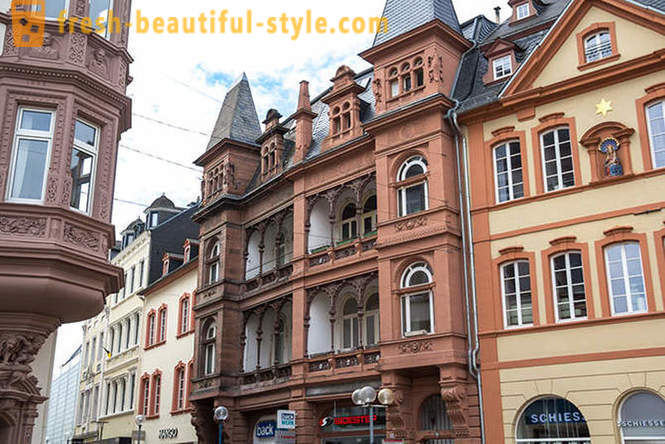
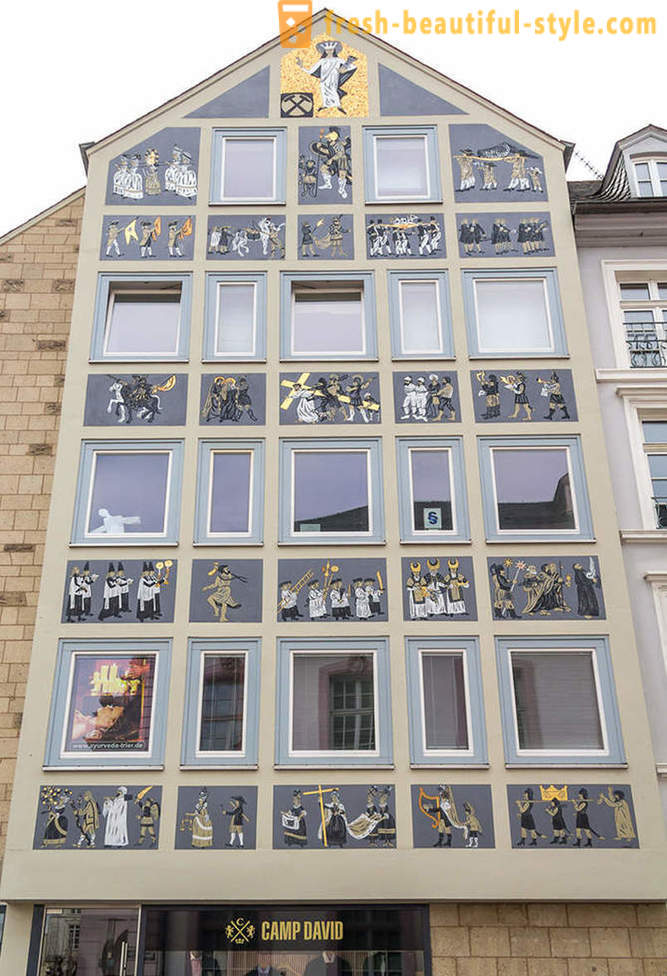
Oh yes, in Trier 5 May 1818 Karl Marx was born. This is his house, is there now a museum.
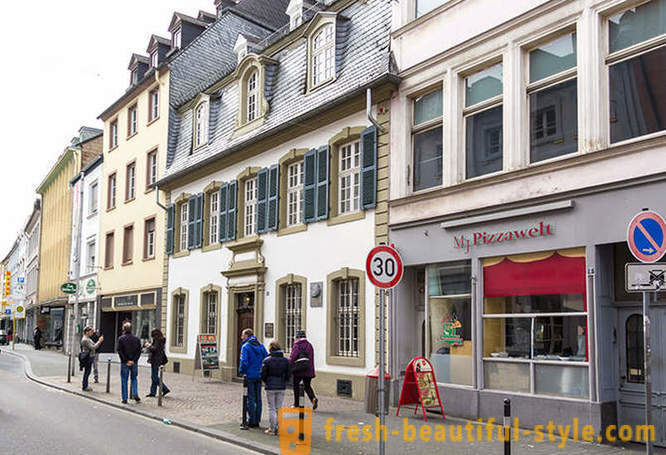

By the way, who have not seen Karl without a beard?

Talk about Trier can be a long time. In addition to the above mentioned attractions there is the palace of the Elector (part of it is currently being restored)
There is a great park, beautiful fountains, a few houses in the Baroque style. The city has several museums, including the Museum of History, the Cathedral Museum, Museum of the City Library, where, among other things, is one of the Gutenberg Bible, the toy museum. Triersky Carnival - one of the largest in the west of Germany. During the year there are various festivals and fairs, including the Christmas market.
Trier is situated on the Moselle, and this wine region, so that you can taste the different varieties of the Moselle wines and a visit with a guided tour some wineries near the town. In Trier is very well versed in the wines, not only in the Moselle, but also in French. Each more or less a normal restaurant, extensive wine list showing all the characteristics of the wine that shows thoughtful and serious attitude to this noble drink.
For one- or two-day rest Trier - a magical place!















































